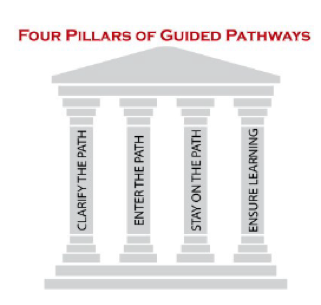 The informative Guided Pathways Summit 2.0 on Jan. 25 offered faculty, staff, administrators and students an opportunity to learn more about the framework and provided insights about how we can all better serve students. The meeting began with an informative presentation from Nina Lyon Bennett of EAB, who speaks extensively around the nation on various topics, including Guided Pathways. Dr. Bennett is a director of member education and research delivery at EAB, focusing on student success research and programs. Most recently, she served as chair of the Department of Human Ecology at the University of Maryland Eastern Shore.
The informative Guided Pathways Summit 2.0 on Jan. 25 offered faculty, staff, administrators and students an opportunity to learn more about the framework and provided insights about how we can all better serve students. The meeting began with an informative presentation from Nina Lyon Bennett of EAB, who speaks extensively around the nation on various topics, including Guided Pathways. Dr. Bennett is a director of member education and research delivery at EAB, focusing on student success research and programs. Most recently, she served as chair of the Department of Human Ecology at the University of Maryland Eastern Shore.
A meta-major sorting activity followed a lunch break, with a focus on groups of related majors that have common prerequisites, core requirements, or goals. In an effort to facilitate student decision-making and provide more focused student support, El Camino College plans to implement meta-majors. Participants learned about design principles driving the meta-major implementation effort, then assigned different majors into groups based on the principles. Outcomes from this session will become part of the final data used to create ECC's meta-majors. A review of program maps rounded out the day. During fall 2018, more than 70 program maps were created by faculty, students and staff, offering a semester-by-semester plan of how students can earn a degree or certificate. Participants in this session reviewed some of these previously created program maps, and gave feedback based on their own knowledge and experience at the college.
Thank you to faculty coordinators Jenny Simon and Janice Pon-Ishikawa for organizing the highly engaging Guided Pathways Summit 2.0. The college's Guided Pathways framework is designed to ensure the college is ready to meet students where they are, with a personalized path to success. The framework uses a student-centered approach to dramatically increase the number of students earning degrees and certificates, reduce excess units, shorten the time to earn a degree, and close equity gaps.


